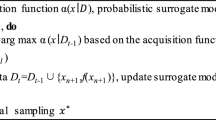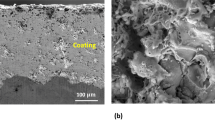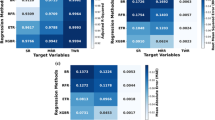Abstract
The present work deals with drill wear monitoring using an artificial neural network. A back propagation neural network (BPNN) has been used to predict the flank wear of high-speed steel (HSS) drill bits for drilling holes on copper work-piece. Experiments have been carried out over a wide range of cutting conditions and the effect of various process parameter like feedrate, spindle speed, and drill diameter on thrust force and torque has been studied. The data thus obtained from the experiments have been used to train a BPNN for wear prediction. The performance of the trained neural network has been tested with the experimental data, and has been found to be satisfactory.
Similar content being viewed by others
References
Noori-Khajavi A, Komanduri R (1995) Frequency and time domain analyses of sensor signal in drilling-II, investigation on some problems associated with sensor signal. Int J Mach Tool Manuf 35:795–815
Lin SC, Ting CJ (1995) Tool wear monitoring in drilling using force signals. Int J Mach Tool Manuf 180:53–60
Lin SC, Ting CJ (1996) Drill wear monitoring using neural network. Int J Mach Tool Manuf 36:465–475
Das S, Roy R, Chottopadhyay AB (1996) Evaluation of wear of turning carbide inserts using neural network. Int J Mach Tool Manuf 36:789–797
Lee BY, Liu HS, Tarng YS (1998) Modelling and optimization of drilling process. J Mater Process Technol 74:149–157
Choudhury SK, Jain VK, Rama Rao ChVV (1999) On-line monitoring of tool wear in turning using neural network. Int J Mach Tool Manuf 39:489–504
Kosmol J, Czech M, Klarecki K, Sliwka J (1999) The optimization of drills for machining of austenitic steel. J Mater Process Technol 80–90:117–122
Liu HS, Lee BY, Tarng YS (2000) In-process prediction of corner wear in drilling operations. J Mater Process Technol 101:152–158
Xiaoli L, Tso SK (1999) Drill wear monitoring based on current signals. Wear 231:172–178
Choudhury SK, Raju G (2000) Investigation into crater wear in drilling. Int J Mach Tool Manuf 40:887–898
Tsao CC (2002) Prediction of flank wear of different coated drills for JIS SUS 304 stainless steel using neural network. J Mater Process Technol 123:354–360
Davim JP, Antonio CAC (2001) Optimal drilling particulate metal matrix composites based on experimental and numerical procedures. Int J Mach Tool Manuf 41:21–31
Ertunc HM, Loparo KA (2001) A decesion fusion algorithm for tool wear condition monitoring in drilling. Int J Mach Tool Manuf 41:1347–1362
Kim HY, Ahnn JH, Kim SH, Takata S (2000) Real-time drill wear estimation based on spindle motor power. J Mater Process Technol 124:267–273
Nouari M, List G, Girot F, Coupard D (2003) Experimental analysis and optimization of tool wear in dry machining of aluminium alloys. Wear 255:1359–1368
Chien WT, Tsai CS (2003) The investigation on prediction of tool wear and the determination of optimum cutting conditions in machining17–4 PH stainless steel. J Mater Process Technol 140:340–345
Abbu-Mahfouz I (2003) Drilling wear detection and classification using vibration signals and artificial neural network. Int J Mach Tool Manuf 43:707–720
Wong SV, Hamouda AMS (2003) Machinability data representation with artificial neural network. J Mater Process Technol 138:538–544
Ertunc HM, Oysu C (2004) Drill wear monitoring using cutting force signal. Mechatronics 14:533–548
Kim D, Ramulu M (2004) Drilling process optimization for graphite/ bismaleimide-titanium alloy stack. Compos Structures 63:101–114
Williams RA (1974) A study of drilling process. J Eng Ind 96:1207–1215
Author information
Authors and Affiliations
Corresponding author
Rights and permissions
About this article
Cite this article
Singh, A., Panda, S., Chakraborty, D. et al. Predicting drill wear using an artificial neural network. Int J Adv Manuf Technol 28, 456–462 (2006). https://doi.org/10.1007/s00170-004-2376-0
Received:
Accepted:
Published:
Issue Date:
DOI: https://doi.org/10.1007/s00170-004-2376-0




